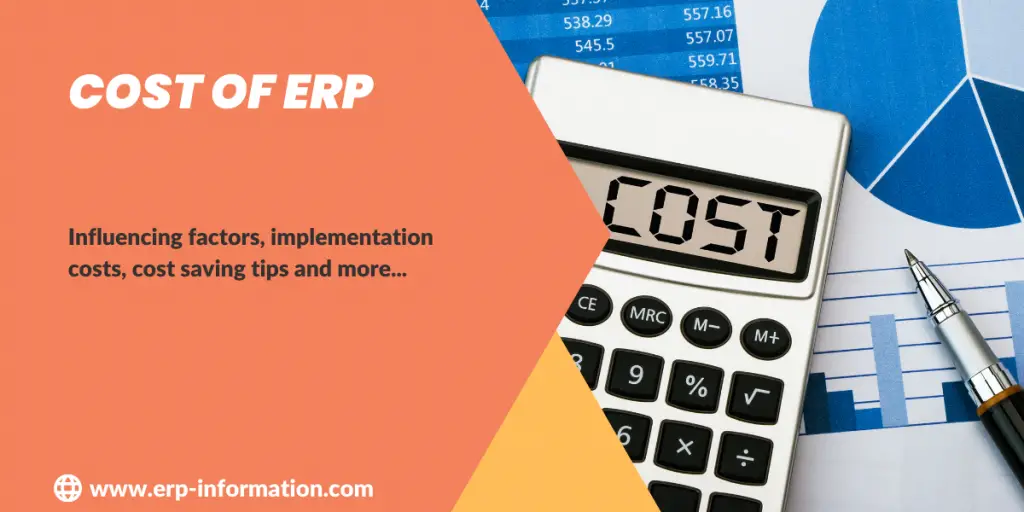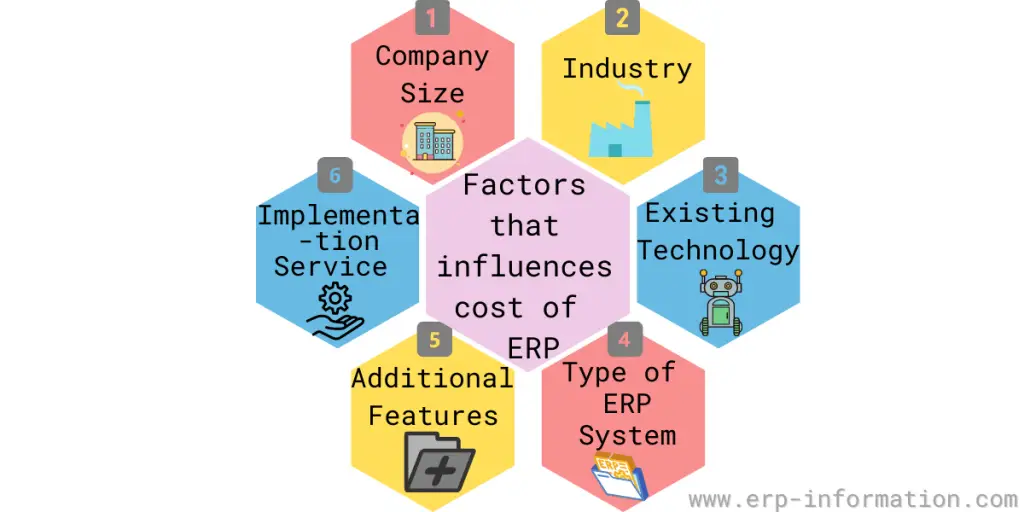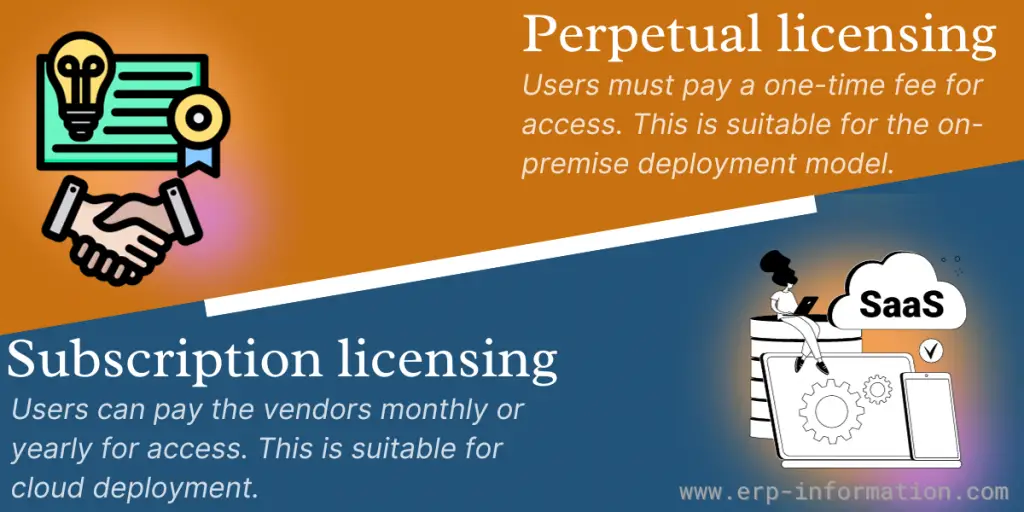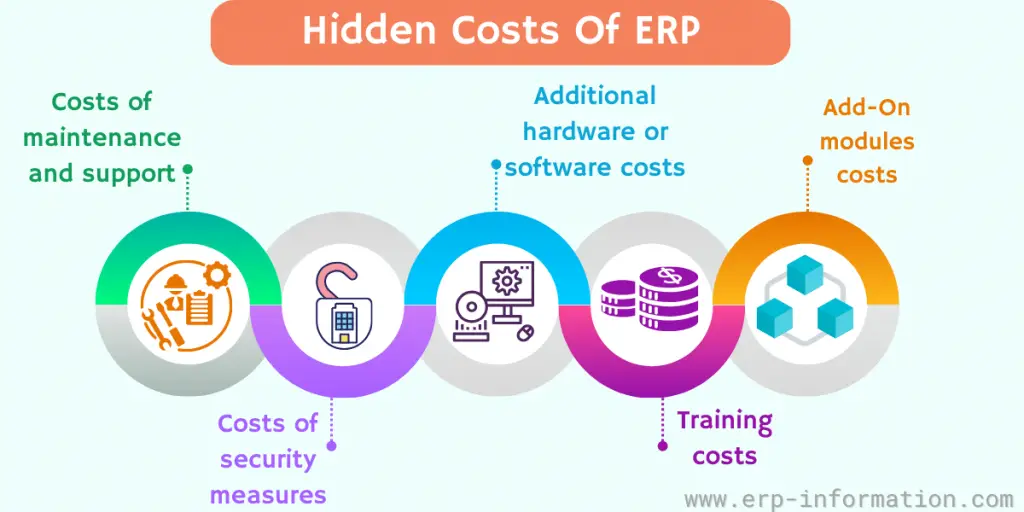Embarking on an Enterprise Resource Planning (ERP) journey is a transformative venture for any organization. However, it’s important to consider the costs involved in setting up such a system.
There is no one-size-fits-all answer regarding the cost of ERP systems. Instead, the cost of ERP depends on various factors, ranging from the size and complexity of your business to the features you need in an ERP system. Do read on to get a better knowhow.
This blog post will look at the cost of ERP, what influences ERP pricing, and how you can keep costs down when implementing ERP in your organization.
Before knowing about the cost of ERP, Let us explore the basic Modules of ERP solutions. These standard ERP modules are essential for all businesses, from small to enterprises. They are as follows.
- Purchasing Module
- Production Module
- Financial Module
- Inventory Management
- Human Resource Management
- Customer Relationship Management
- Sales Module
Open-source ERP software
Some of the ERP software is open source. Therefore, it costs little. Open-source ERP software means it allows users to view and modify the source code. This type of ERP software is typically developed by a community of developers who share the code for free or at a price.
Open-source ERP has several benefits over traditional ERP software.
- First, because the code is open to modification, users can tailor the software to their specific needs.
- Because the software is open source, it is often cheaper than traditional ERP software.
- Finally, because the code is open to modification, users can troubleshoot and fix problems themselves without relying on the developer’s support.
Check out more information about Open source ERP here.
What influences the cost of ERP?
One of the most common cost questions is “How much does ERP cost?” but we cannot answer this question in isolation.
For example, you might assume that cost depends on company size or industry. Still, these influences don’t necessarily affect cost alone. They also impact how you implement the system and what customizations are required to work for your business.
Enterprise resource planning cost is also influenced by the functionality you need and want in your system. The most comprehensive ERP systems can cost millions of dollars, while a more limited system may be only $50,000 or less.
It is important to remember that the ERP implementation costs don’t stop at the purchase price. Considering the cost of using and maintaining the system would be best.
Thus, the cost is influenced by internal factors like company size, industry, existing processes, and technology and external factors like consultants, integrators, and software vendors.
Company Size
Larger companies have a higher cost of implementing an ERP system than smaller businesses because they require more features and functionality. In large organizations, the number of users is also higher.
Additionally, larger organizations often need consultants or integrators to help with implementation.
Industry
The cost can vary greatly depending on the industry. For example, companies in the manufacturing and retail sectors typically have higher implementation costs than those in the services sector.
Existing Processes/Technology
The cost is often influenced by how much work must be done to integrate the new system with existing processes and technology.
If a lot of customization is required, the cost will be higher. Conversely, the price will be lower if you can easily integrate the new system with existing technology.
Type of ERP System/Deployment Type
The ERP price can vary depending on whether it is cloud-based or on-premise. However, cloud-based systems are typically less expensive to purchase and maintain than on-premise systems.
Additional Features/Add-ons
The cost can also be influenced by the number of additional features required for the specific business needs at hand.
For example, a company that needs advanced supply chain management functionality will likely have a higher cost than one that only requires essential accounting software.
Implementation Services and Training
The cost of implementing services influences the cost of ERP. These include
- System Architecture
- Number of Users
- Consulting
- Customization
- User training on the new system.
- Database size
Consulting fees can range from $100/hour to $500+ per hour depending on experience (experienced consultants cost more than recent graduates).
Customization costs can also be high, depending on the amount of work that needs to be done. Finally, training can cost anywhere from $500 to $5000 per user, depending on the length and complexity of the training program.
ERP pricing models
ERP software vendors offer different pricing modules. This also affects enterprise resource planning prices.
Perpetual licensing
In this type of licensing, users must pay a one-time fee for access. This is suitable for the on-premise deployment model.
Upside
- No need to depend on vendors
- Costs will be reduced over time
- No need to renew licenses monthly or yearly
Downside
- You need to pay a big amount at a time to get the license
- Need proper maintenance of security and operations
- You cant work anywhere and on any device
Subscription licensing
In this type of licensing, users can pay the vendors monthly or yearly for access. This is suitable for cloud deployment.
Upside
- It is cheap compared to Perpetual licensing.
- You can access the software anytime, anywhere, and on any device.
- The vendor does the updation and maintenance of software.
Downside
- It becomes expensive over time.
- You need to depend more on the vendor.
- You need to have a good internet connection.
Non-monetary costs
When it comes to the cost of ERP, we need to consider Non-monetary costs. They refer to expenses that cannot be measured in terms of money or financial value. These costs are usually intangible and difficult to quantify, but they can still significantly impact businesses.
ERP implementation process will be associated with high non-monetary costs. They are
Time
The time spent on a task or activity is a non-monetary cost. According to NetSuite, ERP implementation takes six months to one year, depending on the ERP solution, deployment, and training sessions.
Hence during the implementation company lost its employees’ time. It is one of the non-monetary costs that are not directly related to generating income.
Productivity
When the IT staff of the company is dedicated to the ERP implementation process, productivity will decrease for the time being. While giving training to the end-users also will lead to a decrease in productivity.
Hidden Costs
Here, we are shedding light on some of the hidden costs,
Maintenance and Support
Ongoing maintenance and support costs can significantly impact the total cost of ownership. Maintenance and support cost includes post-implementation support fees, including updates, patches, and troubleshooting.
Security Measures
Safeguarding your ERP system demands robust security measures, often overlooked in initial cost estimates. You need to consider the investment cost in cybersecurity protocols, encryption, and regular security audits to protect sensitive data.
Additional Hardware or Software
New ERP systems may require additional hardware or software components for optimal performance. For example, you may need hardware like printers, credit card readers, etc.
Training Costs
Adequate training for users is often underestimated, leading to potential disruptions and inefficiencies. Some of the ERP vendors provide training materials through guides, seminars, webinars, and certification classes.
They charge some amount for the same. Hence, a budget is needed for comprehensive training programs to empower users with the skills needed to maximize the ERP’s potential.
Add-On Modules
As your business evolves, you may discover the need for additional modules to meet specific requirements. Anticipate potential future needs and inquire about the costs associated with adding modules.
How to keep the price of ERP solutions down?
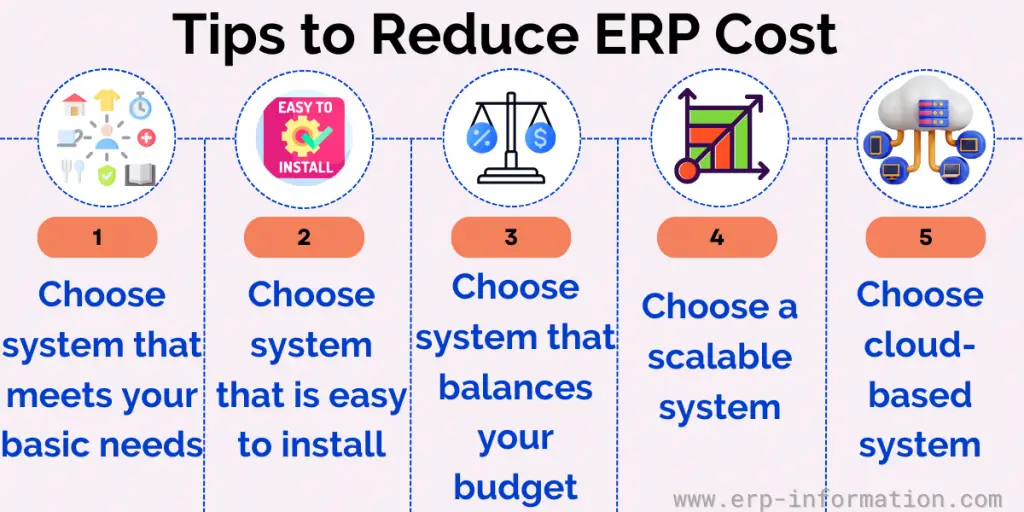
There are many ways to reduce the cost of ERP without compromising on features or functionality.
One way is to choose a system that meets your basic needs and then add modules. You can also save money by using off-the-shelf software rather than customized solutions.
Some other cost-saving tips
- Purchase a system that is easy to install and manage. Then, if your team has the expertise to maintain it, you don’t need to hire consultants or integrators who cost more money in the long run.
- Ensure your budget covers all costs associated with implementing the system, including hardware, software, customization, and training.
- Select a scalable system so you can add users or modules as your business grows without purchasing a new system.
- Use cloud-based solutions whenever possible to reduce infrastructure costs.
ERP costs don’t have to be prohibitive, especially if you choose a cost-effective solution that meets your business needs. Keep these cost-saving tips in mind when evaluating ERP solutions for your company.
Cost of implementing ERP system for small businesses
The cost of ERP can vary greatly depending on factors like size, industry, and existing processes/technology.
For example, some small businesses may only need basic functionality, while others require advanced tools such as supply chain management or accounting software.
The cost also depends on what type of ERP system is being implemented (e.g., cloud-based versus on-premise) and whether any additional features are required for the specific business needs.
Small businesses should expect to pay anywhere from $5000 to $100,000 for an ERP system, with an average cost of around $30,000. This cost includes the price of the software license and subscription fee, implementation services, customization, and training.
Costs of implementing ERP systems in organizations
Larger businesses typically have a higher cost of implementing an ERP system but, in many ways, reduce costs.
For example, the cost can be minimized by using off-the-shelf software instead of customizing it for your specific needs and choosing a cloud-based solution rather than one that requires onsite infrastructure (such as servers).
Large organizations should also expect to pay anywhere from $100,000 to millions of dollars for an ERP system, with the average cost being around $500,000.
This cost includes the price of the software license and subscription fee, implementation services, customization, and training.
Top ERP software pricing
Odoo
Odoo provides three plans.
- One app – It is free, but for only one app
- Standard – $24.90 per user per month
- Custom – $37.40 per user per month
OnCloud
It offers four pricing plans.
- Startup – $10 per user per month for a minimum of 5 users
- Standard – $15 per user per month for a minimum of 10 users
- Enterprise – $20 per user per month for a minimum of 20 users
- Custom – For more than 100 users
BizAutomation
BizAutomation offers only one pricing of $79.95 per user per month (yearly billing). Add-ons are not included.
FAQs
What are some unforeseen costs of ERP?
ERP implementation can be expensive. It is not unusual for a company to spend $1 million or more on an ERP system, and the costs can go even higher if customization or consulting services are required.
Many companies underestimate the cost of ERP and its impact on their budget. For example, a Gartner study found that 43 percent of companies implementing ERP projects exceed their budget by 26 percent.
Other unforeseen costs include the need for additional staff to manage the new system, data migration challenges, and increased downtime during implementation.
Therefore, it’s essential to do your research and understand all the costs associated with an ERP implementation before you begin so there are no surprises down the road.
In addition, ERP systems often require significant changes in business processes and worker skills, leading to increased costs in terms of training and lost productivity while employees learn the new system.
Finally, there is always the risk that an ERP implementation will not meet expectations and that the company will have to invest still more money in correcting problems.
Conclusion
In this blog post, we have covered details about the cost of ERP and factors that influence the price.
We have also provided tips on keeping costs down without compromising on features or functionality. We hope this article was of help.
